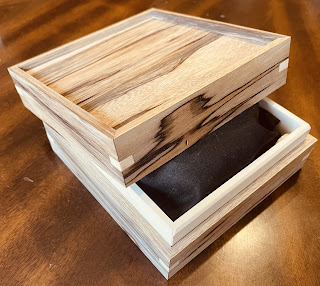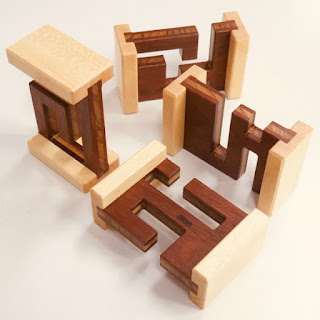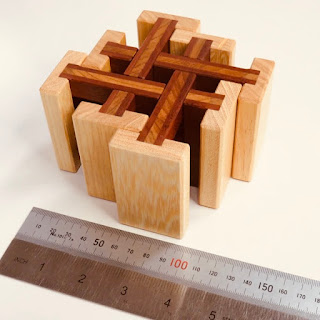I was fortunate to have acquired this cool puzzle from ‘Monkeypuzz’ at Puzzle Paradise.
I’ve yet to unscramble this one and reassemble it as per the instructions so I’ll have to update that later..
Here’s the Description from Brian at Mr Puzzle:
“Edward Hordern IPP27 Puzzle Exchange – Gold Coast, Australia. August 2007. 200 made.
Presented by Bill Darrah. Made by Mr Puzzle Australia. Designed by Bill Darrah.
Original Price: AU$70.00
The puzzle is to disassemble and reassemble the 12 piece wooden burr so that all the decorative routing is symmetrical.
The puzzle can go together in two different ways. One way, without the decorative routing symmetrical, is how the puzzle is presented when sold. You will have to completely take it apart so that you can then put it back together with all the routing symmetrical. This is a lot more difficult than it may first appear.
A very elegant design by Bill Darrah who is well known for designing very difficult puzzles. As well as being a burr it is actually a box with an inside space of 45mm x 45mm x 45mm. Puzzle made from Mackay Cedar.
Size: 100mm x 100mm x 100mm”





















































